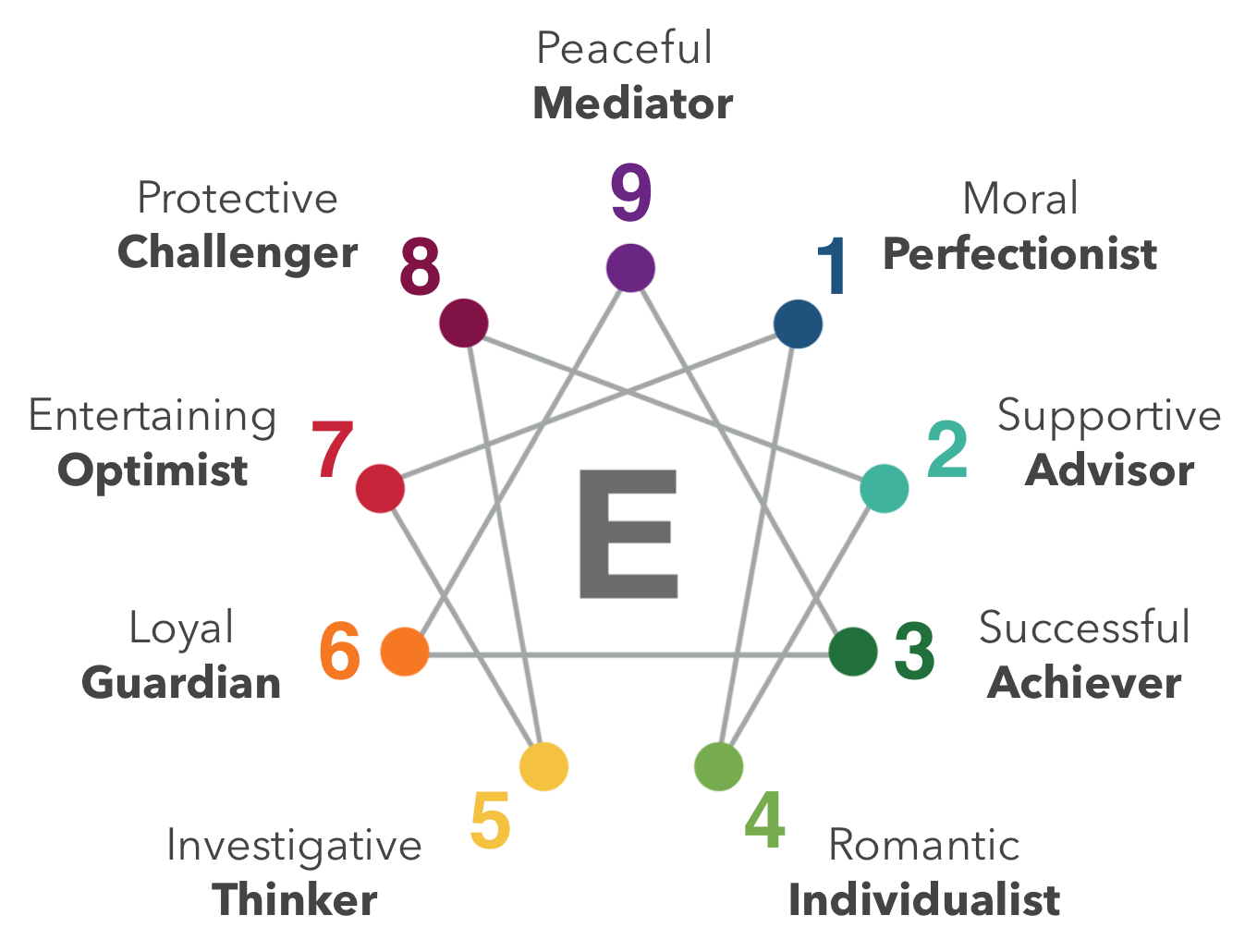Over the last few months, I’ve seen the word “Enneagram” pop up all over my Instagram feed. People credited it with making them better partners, changing the way they dealt with their kids, and helping them understanding who they were. There are books, there are blogs, there are really expensive courses you can take. People are really into this thing.
After some quick research, I found a quiz that would tell me what my Enneagram is.
I’m a sucker for a good online quiz. Those “Which Harry Potter house would you be in quizzes”? I’ve probably done them all. I know which fast food I am, what my tastes in TV shows reveal, and which Saved by the Bell character I would be (Lisa Turtle, apparently.) And working at Siegfried means I’ve taken a lot of different personality tests, including Fascinate.
So, I took the quiz (and with 144 questions, it was no small task) and got my Enneagram type.
First of all, what is an Enneagram?
According to the Enneagram Institute, the Enneagram is “one of the most powerful and insightful tools for understanding ourselves and others. At its core, the Enneagram helps us to see ourselves at a deeper, more objective level and can be of invaluable assistance on our path to self-knowledge.” It clearly describes why we think, feel, and act in certain ways based on our core fears and core desires.
Pretty deep, right?
But with all personality tests, I think Enneagram is another way to better understand who we are, what we’re like, and appreciate our abilities and strengths (as well as our areas of improvement).
There are nine different Enneagram types. (Enneagram comes from two Greek words: ennea and gramma, which mean nine and drawn, respectively.) You can see all the types and how they interconnect on an Enneagram figure, like this one from Your Enneagram Coach.
A side note about the figure and the ancient wisdom of Enneagrams: The figure has roots in antiquity and some believe it can be traced back at least as far as Pythagoras (good ‘ol a2 = b2 = c2). And although the modern day Enneagram was first taught in the 1960s, the philosophy behind the Enneagram contains components from mystical Judaism, Christianity, Islam, Taoism, Buddhism, and ancient Greek philosophy.
Everybody experiences all nine types, but we each have a dominant one. Before taking the quiz, I glanced at the figure and tried to discern what my result would be. There were three that I felt connected to, and sure enough, one of those was my result.
The different Enneagram types
The names of the nine different types vary by what source you’re looking at, but here are the ones from the Enneagram Institute, which is where I took the test. (They are named a little differently than the figure above, but the idea is the same.)
- Reformer: rational, idealistic, principled, purposeful, self-controlled, and perfectionistic
- Helper: caring, interpersonal, generous, demonstrative, people-pleasing, and possessive
- Achiever: success-oriented, pragmatic, adaptable, excelling, driven, and image-conscious
- Individualist: sensitive, withdrawn, expressive, dramatic, self-absorbed, and temperamental
- Investigator: intense, cerebral, expressive, dramatic, self-absorbed, and temperamental
- Loyalist: committed, security-oriented, engaging, responsible, anxious, and suspicious
- Enthusiast: busy, fun-loving, spontaneous, versatile, acquisitive, and scattered
- Challenger: powerful, dominating, self-confident, decisive, willful, and confrontational
- Peacemaker: easygoing, self-effacing, receptive, reassuring, complacent, and resigned
I won’t go into all the details about each type here, but there’s a wealth of information available on each one. You can find your basic fear, desire, key motivations, and examples of other people who are your type. (As a Type 3, The Achiever, I’m rubbing shoulders with Prince William, Muhammed Ali, Justin Bieber, Jon Bon Jovi, and Oprah Winfrey.) Even more impressive are the personal growth recommendations for each Enneagram type:
- Be honest with yourself and others about your genuine feelings and needs.
- Develop your social awareness and get involved in projects that had nothing to do with your own personal advancement.
- Take breaks. You can drive yourself to exhaustion with the relentless pursuit of your goals.

Your basic Enneagram type
If you’ve gotten this far, you’re probably interested in finding out what your type is. (I paid $12 to take the official RHETI test, but there lots of free options out there.) Once you do, I found these points interesting.
- Your basic personality type doesn’t change.
- Not everything in your type description will always apply because we fluctuate constantly among the healthy, average, and unhealthy traits.
- The numbers are unbiased and don’t mean anything. So a 9 isn’t better than a 4 just because the number is higher.
- No type is inherently better or worse than any other.
At the end of the day, the Ennegram is both subtle and wildly complex. There are wings, centers, and misidentifications, and theory. It’s used in business to better characterize and understand workplace dynamics and in spirituality to achieve a higher state of being or enlightenment about yourself.
According to Your Enneagram coach, there is both power and a gift in the Enneagram. The power is “in its ability to harness and transform self-limiting behaviors into life-enhancing personal empowerment.” The gift of the Enneagram? It’s something we teach at Siegfried regularly: through self-discovery, you can create and sustain meaningful and lasting relationships with others and yourself.









